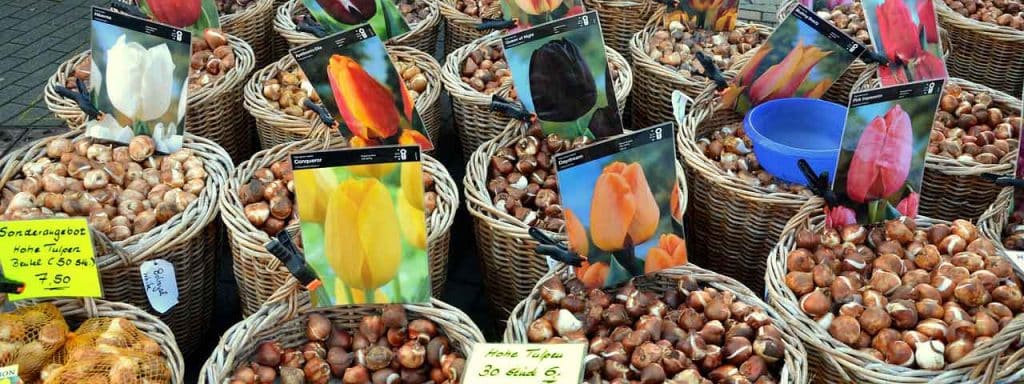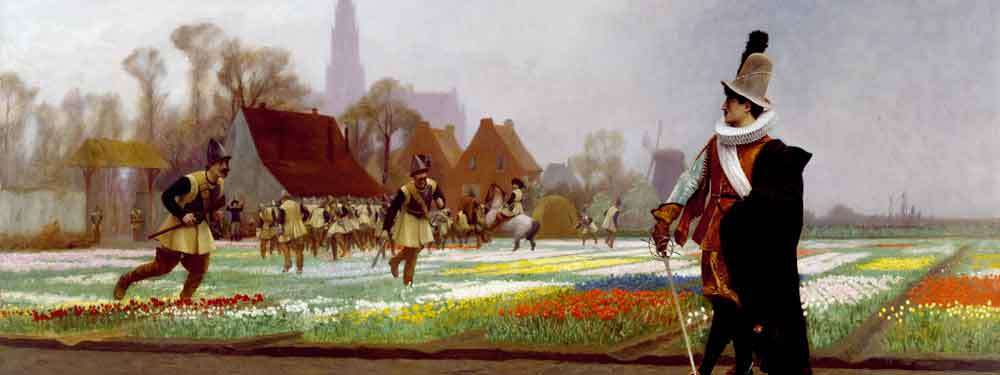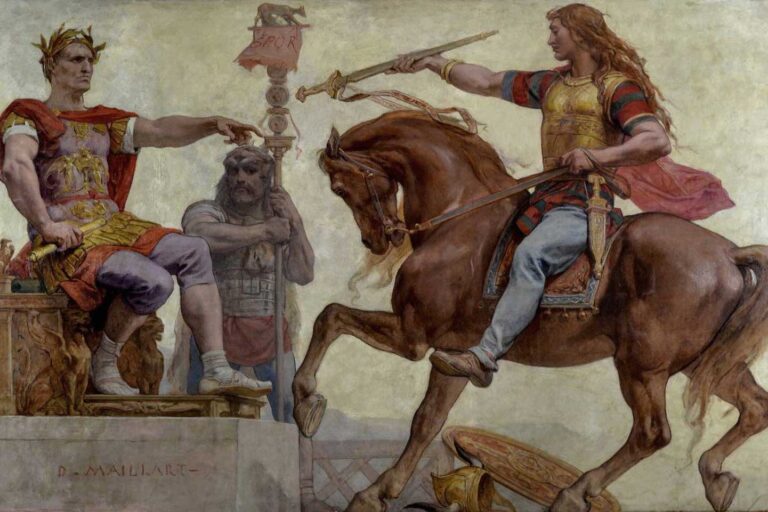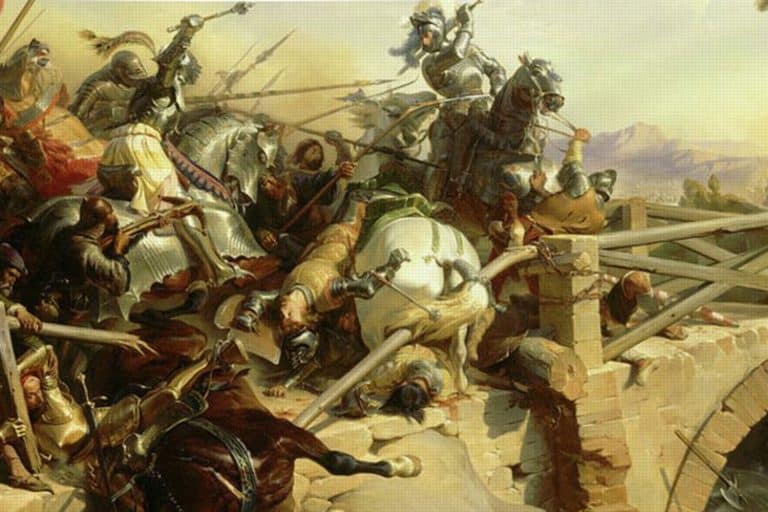Petals of Profit: The Rise and Fall of Tulip Mania in the 1600s
Tulip Mania, one of history’s most fascinating and peculiar economic events, swept through the Netherlands in the early 1600s, captivating investors and everyday citizens alike. What began as an admiration for the beauty of tulips quickly spiraled into a frenzy of speculative buying, with the price of sure rare bulbs reaching astronomical heights. This widespread mania captivated the nation and led to a speculative bubble, as traders believed their value would continue to skyrocket. However, as with all bubbles, it eventually burst, leaving behind financial ruin and a cautionary tale about the dangers of unchecked speculation.

The Introduction of Tulips to Holland
The arrival of tulips in Europe, often credited to Ogier de Busbecq in 1554, marked the beginning of a flower that would take the continent by storm. After Busbecq sent the first tulip bulbs from the Ottoman Empire to Vienna, these exotic flowers went to other European cities, including Amsterdam. However, it wasn’t until 1593, when Dutch botanist Carolus Clusius planted tulip bulbs at the University of Leiden, that tulips flourished in the Netherlands. Clusius discovered that tulips could thrive in the colder, harsher climate of the Low Countries, and soon the flower gained popularity throughout the region.
This tulip popularity surge coincided with Dutch wealth’s peak during the Golden Age. Newly independent from Spain, the Dutch Republic became one of the most prosperous nations in the world, driven by trade and commerce. Amsterdam’s merchants, enriched by the lucrative East Indies trade, were eager to display their newfound wealth, and tulips—known for their brilliant and saturated colors—became the ultimate status symbol. With their distinctive petals, tulips stood apart from any other European flowers, attracting the interest of the Dutch elite.
As the Dutch Republic’s wealth reached unprecedented heights, so did the demand for tulips. The flower became more than a beautiful plant; it symbolized success and luxury. Tulip prices began to rise dramatically, paving the way for what would later be known as Tulip Mania—a speculative bubble that reflected the heights of Dutch wealth and the fragility of market excess. The newfound prosperity of the Dutch Republic, driven by trade and commerce, particularly the lucrative East Indies trade that enriched Amsterdam’s merchants, played a significant role in this demand surge.

The Rise of Tulip Varieties and the Beginnings of Trading
In the 17th century, tulips were classified into several distinct varieties, each with its own unique and striking colors and patterns. The single-hued tulips, known as Couleren, came in red, yellow, and white shades. However, it was the multicolored varieties that truly captured the imagination of the Dutch elite. The Rosen variety featured white streaks on red or pink petals, while Violetten displayed white streaks against purple or lilac backgrounds.
The rarest and most desirable were the Bizarden tulips, with their dramatic streaks of yellow or white set against red, brown, or purple petals. These vivid multicolored effects, later attributed to the tulip-breaking virus, gave these flowers their unique and exotic appearance, adding to their allure and the speculative market that would later emerge.
As the demand for tulips grew, growers began to name their new varieties with grand and prestigious titles. Many early varieties bore the title Admirael (admiral), often followed by the name of the grower, such as the famous Admirael van der Eijck, one of around fifty varieties with the admiral prefix. Another common title was Generael (general), and later varieties took on even more exalted names like Admiral of Admirals or General of Generals. These names added to the tulips’ allure, although the quality and characteristics of these varieties were highly variable. Unfortunately, many of these early varieties have disappeared, lost to time and cultivation challenges.
Tulip trading flourished during the plant’s dormant period, from June to September, when the bulbs could be safely uprooted and sold. This created a bustling spot market for tulip bulbs. However, trading was not confined to these months. Florists and tulip traders began signing forward contracts before a notary, agreeing to buy tulips at the end of the growing season. These forward contracts, combined with the durability of tulip bulbs, laid the foundation for a speculative market that would ultimately fuel the rise and fall of Tulip Mania.

The Rise and Bust of the Tulip Market
As tulip prices soared in the 1630s, driven by the desire for rare, virus-infected bulbs, the market became a playground for speculators. By 1636, tulips were no longer the domain of wealthy collectors and professional growers alone. Lured by quick profit, speculators entered the market, causing prices to rise even for “unbroken” bulbs every day. Tulip contracts were exchanged in taverns, with traders agreeing on future sales despite never handling the bulbs. This speculative frenzy became known as windhandel, or “wind trade,” as no tangible goods exchanged hands. It has even been reported some of these coveted bulbs would sell for ten times the average annual income.
By February 1637, the speculative bubble was ready to burst. Prices had reached unsustainable levels, and when traders could no longer find new buyers, the demand for tulips collapsed almost overnight. What had once been a thriving market for bulbs turned into financial ruin. People were left holding worthless contracts for tulips now worth a fraction of their purchase price, and the market flooded with sellers desperate to unload their bulbs. Some faced losses ten times greater than the current value of their bulbs, while others found themselves with contracts that no longer held value.
In response to the crisis, the Dutch government allowed traders to void their contracts by paying a 10 percent fee, hoping to contain the collapse. However, these measures did little to reverse the market’s downfall. Courts refused to enforce tulip-related debts, considering them the result of gambling, and many traders were left with bulbs they could not sell. The aftermath of Tulip Mania echoed through the Netherlands and served as a cautionary tale about the dangers of speculative bubbles, prompting a reevaluation of the role of government in managing financial crises.
The Aftermath of Tulip Mania and Legislative Response
In the aftermath of Tulip Mania, the Dutch Republic, a beacon of prosperity during the Golden Age, faced widespread financial losses. However, the overall damage was less catastrophic than many feared. While many investors, particularly those who speculated heavily at the bubble’s peak, experienced severe personal losses, the economic impact on the broader population of the United Provinces was limited. This was primarily because the tulip trade, though sensationalized, comprised only a tiny portion of the Dutch economy, which was mainly driven by maritime trade and industry. The Dutch Republic’s resilience in the face of this financial storm is a testament to its economic prowess.

Local governments and courts in the Netherlands stepped in to stabilize the market and address the aftermath. Many traders refused to honor the inflated contracts agreed upon during the height of the mania, leading to legal disputes. The Dutch government, recognizing the need for intervention, enacted policies that allowed contracts made during the bubble’s peak to be voided or settled for a fraction of their original value. This legal adjustment helped to ease the financial burden on those who had bought bulbs at the highest prices, preventing widespread bankruptcies.
The ripple effect of Tulip Mania also brought about a shift in economic practices within the United Provinces. While the country’s overall wealth was not drastically diminished, the event served as a cautionary tale about speculative investment. Many Dutch citizens and merchants became more cautious in their approach to financial speculation, leading to a more measured and regulated market.
This new awareness, combined with the strong fundamentals of Dutch trade and industry, allowed the nation to recover and maintain its position as a leading economic power in Europe.
Tulips in Modern Dutch Culture
Today, tulips hold a much different place in Dutch culture than they did during the height of Tulip Mania. No longer symbols of financial speculation, tulips are now celebrated as national icons of beauty and heritage. Every spring, the Netherlands blooms with vibrant tulip fields, attracting tourists from around the globe to witness the stunning displays. The annual Keukenhof Gardens showcase the enduring charm of tulips, linking the flower’s history with the country’s global reputation as a leader in horticulture.
While Tulip Mania is remembered as a financial cautionary tale, the flower itself has become a source of national pride. Tulips symbolize the resilience and prosperity of the Netherlands, reminding the world of the delicate balance between beauty and economy.







